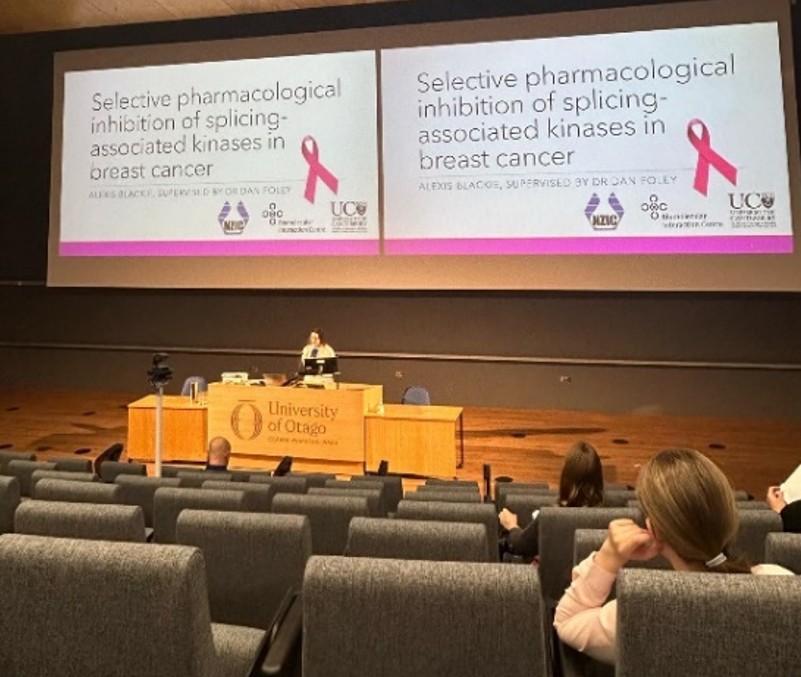Introduction
While some efforts have been made to better understand the career trajectories of science PhD graduates in the US and globally,1,2 little information is available regarding the career trajectories of New Zealand science PhD graduates. Such information would be valuable to current and future PhD students, and early career researchers, who want to understand the career options available to them. It also has value in providing information about the contributions that New Zealand PhD science graduates make to the New Zealand economy and society, at a time when the value of university qualifications seem to be questioned more and more.
Surveys are a common approach for gathering information about graduates. However, response rates for many surveys seldom exceed 30 to 35% as they require participants to actively engage in the survey process. This project sought to explore a different approach in analysing the career trajectory of science PhD graduates, specifically chemistry PhD graduates, using social media, in particular, LinkedIn, to gather the required career and demographic information.
Method
The names of PhD chemistry graduates who graduated from four New Zealand universities (Otago University, University of Auckland, University of Canterbury, Victoria University of Wellington) between 2013 to 2018 were accessed through their institutional theses’ repositories and the resulting data were collated. Graduates from the other New Zealand universities were not included due to time constraints.
Different universities use different identifiers when labelling their theses collections, so for the purpose of this study theses identified as chemistry, biochemistry, medicinal chemistry and food chemistry were included, while those identified as chemical engineering and chemistry education were excluded, on the basis that this study was focused on the career path of graduates primarily trained for chemistry related lab-work.
LinkedIn was used to search for each graduate’s name and where a LinkedIn profile was located, information regarding the roles they had occupied was transferred into a research database along with information about the geographical location of each role. Information from LinkedIn was also used to identify whether the graduates had been international or domestic students (primarily from their secondary and undergraduate education) and to help identify their gender. In a small number of cases additional or corroborating information was gathered using Google searches or through graduate publications.
Results
Demographic information for 2013-2018 is presented in Tables 1 & 2.


Geographic and graduate role information is presented in Figs. 1-4.




Discussion
374 chemistry PhD graduates were identified in the 2013 to 2018 cohort, and their distribution across the four universities is presented in Table 1. Sufficient information was found on social media outlining the career paths of 249 graduates, which equates to 67% of the sample, although there were variations in the percentage across the four universities ranging from 60 to 76%. This is significant in that other methods for gathering information, for example surveys, seldom exceed 30 to 35% unless made compulsory.
Table 2 simultaneously looks at the gender and domestic/international distribution of graduates. Overall, there was a slightly higher proportion of international graduates relative to domestic graduates and slightly more men than women. However, while the male to female ratio within the international cohort was equal, the number of male domestic students was notably higher than the number of female domestic students (although this pattern was reversed for Victoria University of Wellington).
Where do our graduates go – geographically?
Information on the geographical destinations of graduates was extracted from the social media sources and assessed at two time points - two and six years after graduation. A preliminary analysis of the geographical destinations of graduates identified significant differences between international and domestic graduates so these data were analysed separately, displayed in Figs. 1 and 2.
After two years, more international graduates had travelled overseas and appeared to travel to more countries. However, this appeared to be primarily because a reasonable number of international graduates chose to return to their home countries. In some cases, they were returning to roles they had occupied before starting their PhD, e.g. lecturer and industry positions.
After two years, 55% of domestic graduates remained in New Zealand. The majority of those who had travelled outside of New Zealand had travelled to English speaking countries (UK, USA, Australia) or to European countries, with Germany the most popular European destination.
After six years, more international students had travelled overseas with only 36% now remaining in New Zealand. However, the reverse was observed with domestic students, with 63% working in New Zealand after six years. 49% of graduates were living in New Zealand at both year two and six, suggesting that overseas postdoctoral experience is not pursued by all graduates. However, for those 45 domestic students who were overseas two years after graduation, 31 (69%) remained working overseas six years after graduation.
What roles do our graduates occupy?
There were no obvious differences between the roles occupied by international and domestic graduates, so they were assessed collectively (Figs. 3 and 4).
Two years after graduation, 50% of graduates were in academic research positions (postdoctoral or researcher roles), while a smaller percentage were in government research roles (6%) with organisations such as Plant & Food Research, AgResearch and Scion. 23% of graduates were working in industry, 5% were in government advisor roles, 5% were lecturers and the remainder in a variety of different roles.
Six years after graduation, industry now employed the greatest number of graduates (38%), while 27% remained in academic research roles, noting that in some cases individuals had advanced to more senior research roles. There was a slight increase in the number of graduates employed in government roles, both in research (8%) and advisor (7%) capacities. The number of lecturers had increased to 8%.
There were some roles that did not align with the chemistry related categories initially developed for this study, so they were assigned to “other”, but this does not mean that they did not relate to chemistry. Two of the “other” roles were as patent attorneys, while another had become a priest who taught chemistry. One was a STEM librarian, and others were a business analyst (presumably drawing on computational chemistry programming skills), a farm manager and carpenter.
The information gathered in this study indicates after two and six years the majority of graduates are in roles that draw on the skills and knowledge they gained during their PhD, albeit in different ways from lab-based research to advisor and consultant roles, educators and in industry. Examples of roles occupied by graduates six years after graduation include:
- Assistant Director, Forensic Chemistry, in the ACT, Australia
- Chief Information Officer, Anocca AR, Sweden
- Pharmaceutical company researchers in the US, UK, China and New Zealand
- University lecturers in New Zealand, Australia, Malaysia, Samoa and Pakistan
- Research scientists at AgResearch, Scion, MacDiarmid and the Ferrier Institute
- Patent attorneys in New Zealand and Australia
- Researchers at Mint Innovation (climate friendly e-waste technologies)
- Science advisors and analysts in government (MBIE, FENZ, MoE, PM’s Office)
Limitations
While the ability to access information on 67% of the graduate cohort appears to be a significant advantage of this methodology compared to other approaches (e.g. surveys), the absence of information on the career pathways of 33% of the cohort is a limitation.
The study cohort used information from chemistry PhD graduates from four of eight New Zealand universities over a specific period (2013 – 2018) and as such the patterns observed may not reflect those for other time periods, subjects or institutions.
Some categorisation errors may be present due to subjective assessment of some of the roles occupied by graduates and their domestic/international student status. This method also relies on the information being presented on LinkedIn being true.
Future research
It is anticipated that this method could be applied to PhD graduates in other subject areas. It has already been used for a successful analysis of the career trajectories of biology PhD graduates at the University of Canterbury (unpublished research).
A preliminary assessment of LinkedIn profiles of undergraduate chemistry graduates indicated this is unlikely to be a viable approach for exploring the career trajectories of Bachelor of Science graduates as there was much lower use of LinkedIn.
Tracking of graduates over a longer period of time would also be another interesting extension of this project.
Conclusions
This project has demonstrated that social media (particularly LinkedIn) provides a valuable source of data for tracking the career trajectories of chemistry PhD graduates. In this preliminary study, information could be located for 67% of the cohort, outperforming the usual response rate for surveys. Another advantage of this approach is that the required data can be gathered without inconvenience to the graduate subjects.
References
- Woolston, C. PhDs: the tortuous truth. Nature 2019, 575(7782), 403-407
- National Science Foundation. (2015). Survey of graduate students and postdoctorates in science and engineering






